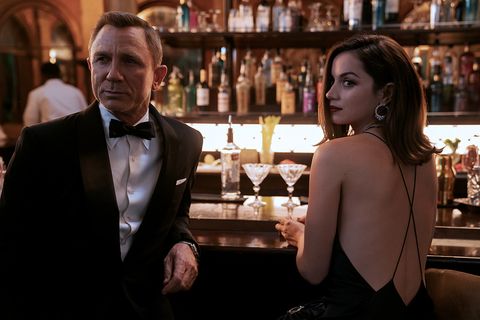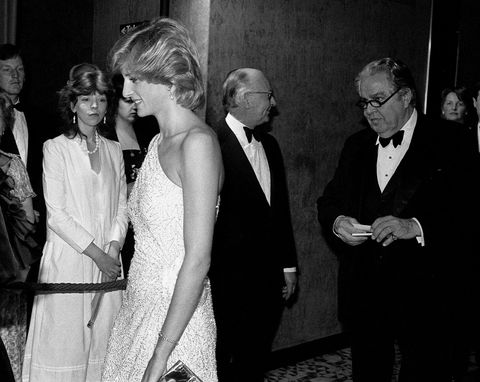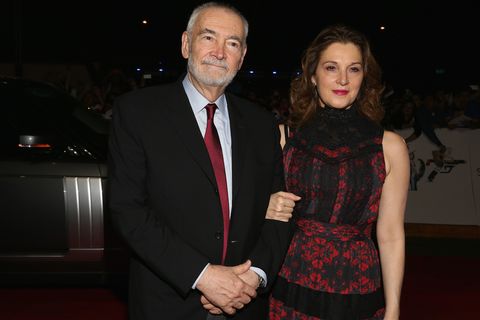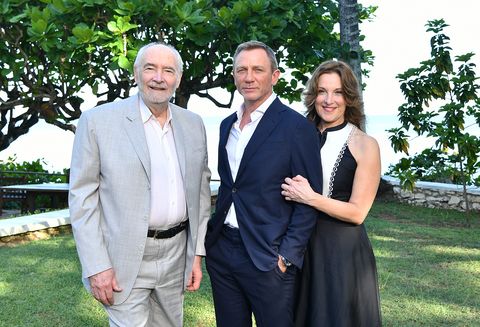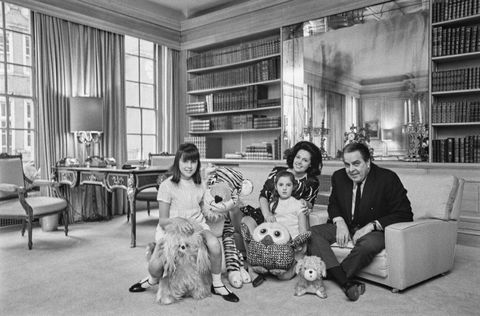Inside the family behind the James Bond empire, broccoli
When the long awaited No time to die lands in theaters on October 8, it will be the 25e James Bond film released in the past 59 years. Six different actors, 11 directors, and multiple screenwriters, editors, and art directors were needed to bring the legendary spy to life, but the one factor that has always been constant is the Broccoli family.
Albert “Cubby” Broccoli was already a Hollywood gamer – Cary Grant witnessed his marriage in 1959 – when he teamed up with Harry Saltzman in 1961 to form the Eon (All or Nothing) Productions. Saltzman had the option on Ian Fleming’s James Bond stories and Broccoli had access to funding. He had produced several films with Columbia Pictures, but they had a lot of restrictions and would not accept a budget of more than $ 400,000 for the first Bond film, 1962. Dr No. Broccoli’s next stop was United Artists, founded in 1919 by the four most successful artists of the era who sought creative control. While two of the four founders, Mary Pickford and Charlie Chaplin, had sold their stake in the company in 1952 (DW Griffith and Douglas Fairbanks had died years before), their original spirit of independence and daring has survived. .
Each UA film was an independent production. After approval of the budget, script, director and cast, the producers took over until final delivery. No quarrels over the dailies, no UA representatives on the sets, no so-called creative notes. UA agreed to go to $ 1.1 million for the budget, but first Broccoli kept his commitment to call Columbia to see if they would match the deal. No other company would have granted the freedom UA did and for Broccoli who had his hands full of myriad demands and distractions, it’s hard to believe that if Columbia had responded to UA’s offer, the series would have lasted well beyond that first film..
The best cinema is a team sport where each participant brings their unique talents to the field. In the case of the Bond franchise, it started with Maurice Binder designing the main title sequence and production designer Ken Adams and John Barry arranging the now instantly recognizable musical theme (composed by Monty Norman). Musical talents showcased by the films include Shirley Bassey, Tom Jones, Paul McCartney, Carly Simon and Adele. Billie Eilish, Finneas, Hans Zimmer and Johnny Marr came together to create the theme and score for No time to die.
They are an impressive group, but not surprising given the high standards Cubby Broccoli has insisted on. Many comment that he treated his cast and crew like family, and his daughter Barbara Broccoli grew up absorbing that attitude. She’ll tell you she was in diapers on the set for Dr No and remembers Sean Connery sending her doctor when she was ill on a remote Japanese island during the 1967s filming You only live twice. She said she was at least seven years old before she realized that James Bond, who was talked about regularly at the dinner table, was not a real person.
Michael Wilson was 17 when his mother married Cubby, and although Bond has been a part of life ever since, Wilson officially entered the fold in 1979 as legal counsel, then as a producer and co-writer for some. movies.
Over the years, there have been lengthy lawsuits over rights and financial strains, and Harry Saltzman sold his rights to United Artists after seven Bond films. The six-year gap between License to kill in 1989 and Pierce Brosnon’s debut in golden eye 1995 was a particularly difficult time for Cubby Broccoli, and he passed away at the age of 87 in 1996.
The company had plenty of opportunities to implode, and Bond’s longevity is all the more impressive compared to the on-screen history of other superheroes. Marvel characters have changed hands between multiple studios on several occasions, and Superman has spent more than his fair share of time in litigation. Broccoli’s mix of passion, experience, determination and serendipity kept her momentum going when Barbara and Michael officially took over Eon in 1995. Pierce Brosnan winked at Bond devilishly; while the stunts and backgrounds would become more outrageous over the course of its four releases, the humorous zingers (“Oh James, you’ve always been such a crafty linguist“) sorely missing in the returned versions of Timothy Dalton. Whenever a new Bond stepped in, there was critical resistance, but the box office rarely complained.
After the September 11 attacks, Barbara and Michael decided that it was time to make Bond more current and “realistic” (however, this is done with a superhero), and that Daniel Craig was the man to make it happen. job. Just as Ursula Andress introduced herself to the public when she came out of the sea in Dr No, Craig made a similar jaw-dropping entry in Casino Royale. David Picker, the UA executive who was in his 20s when Cubby joined the company, witnessed the roller coaster for 50 years and credited Michael and Barbara with “brilliantly reinventing the franchise.”
Yet it has been almost six years since Spectrum, Bond’s latest film, has appeared on the big screen. No time to die was first postponed when a director replaced another, ‘creative differences’ resulted in script changes, including a review by Chip bag‘s Phoebe Waller-Pont; injuries on the set and the lasting impact of Covid-19 added to the delays.
No time to die will mark Daniel Craig’s fifth and supposedly last appearance as a Bond, a fact Barbara Broccoli said she refused to consider. But of course, she and Wilson have to do just that if the series is to continue. It wouldn’t be the first time they’ve reinvented the Spy and his universe, but they face a world very different from the one Cubby has sailed in all these years.
This time around, that reinvention is happening at the same time as the film industry is reinventing itself. It has faced difficult threats in its 120-year history, such as the 1918 flu epidemic, the sudden popularity of radio, and the Great Depression in which only MGM operated in the dark for an extended period. When television became affordable, it was heralded as the end of cinema, but it fought back with 3D, Cinerama, and explosive sound. But this time could be different. With theaters closed for at least a year, companies like Warner Bros., now owned by AT&T;, have simply taken control and channeled many of their movies straight to streaming. Others have either reduced the time between theatrical release and streaming, or simply skipped theaters altogether.
Barbara Broccoli has been a holdout for theatrical release. When MGM, the company that absorbed United Artists over 30 years ago and whose main shareholder is a hedge fund, attempted to sell No link to die to Netflix or a competing streamer, she has put her foot down. She’s one of the few producers to have this kind of power and who can blame her for trying to hold on?
After all, Bond is the ultimate hero on the big screen. Can you imagine watching those explosive opening sequences such as Leap on skis in the majestic Alps chased off a cliff in The spy who loved me on an iPhone? At the film’s London premiere, audiences, including Prince Charles, rose to thunderous applause as the Union Jack parachute opened as the famous Bond theme swelled in theater. It just doesn’t happen in salons, but the question now is, will it ever happen again somewhere?
This content is created and maintained by a third party, and uploaded to this page to help users provide their email addresses. You may be able to find more information about this and other similar content on piano.io
